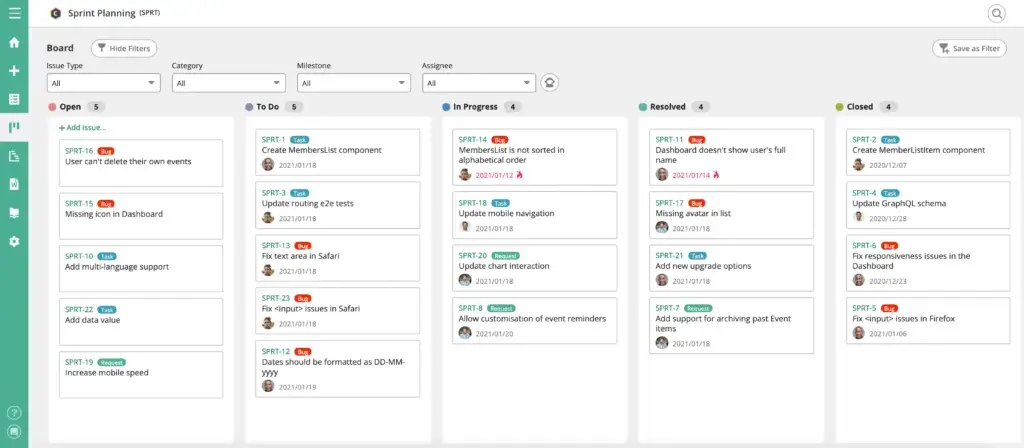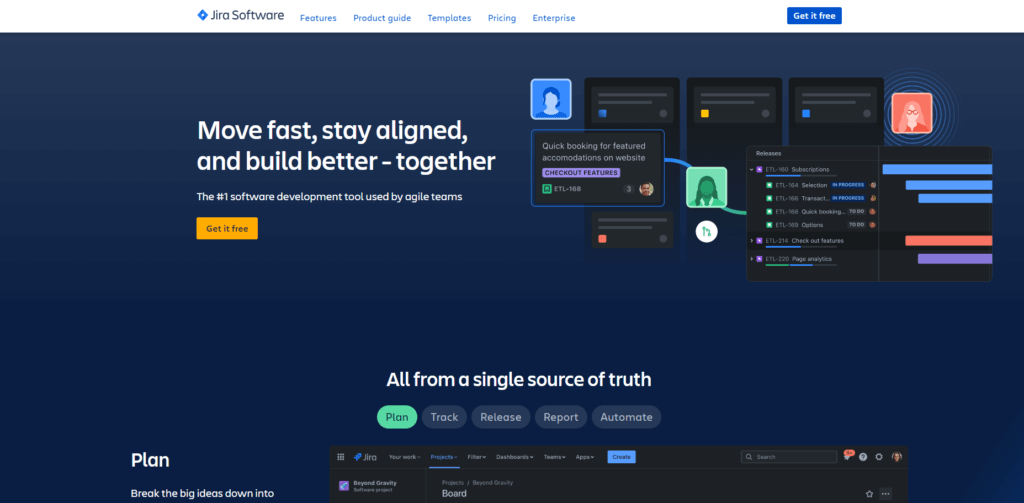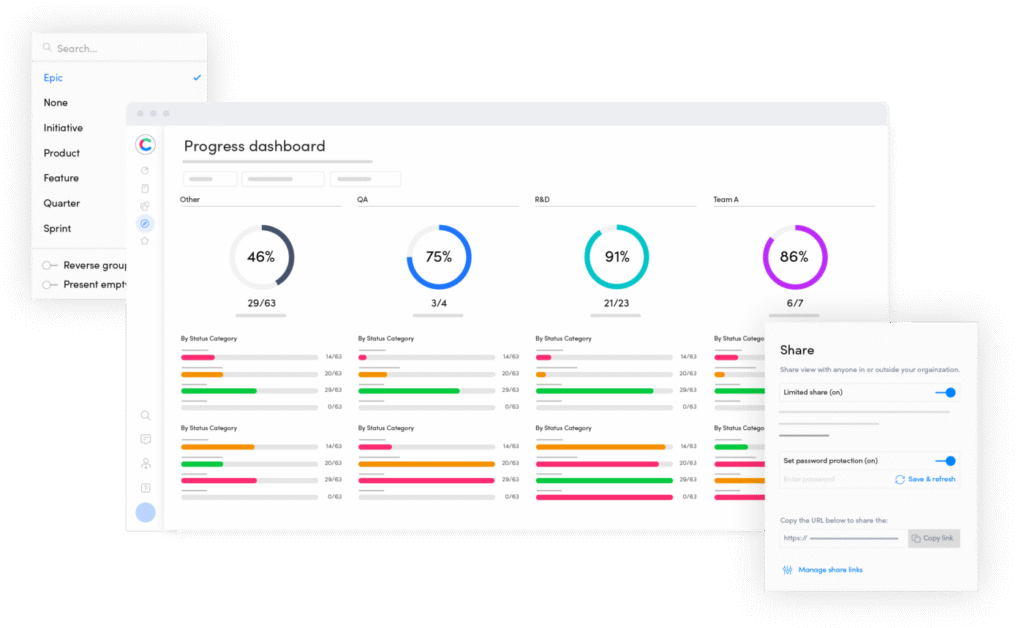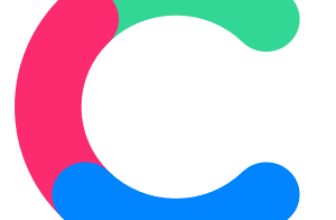Introduction
Agile teams thrive on flexibility, quick feedback cycles, and continuous improvement. To enable this way of working, you need tools that support collaboration, transparency and iterative planning. Agile management software provides a centralized hub where you can prioritize backlogs, plan sprints, track progress, and communicate with stakeholders. Selecting the right tool is essential for keeping your team aligned and delivering quality products on schedule.
In this guide, you’ll explore six of the best Agile management software platforms available today: monday dev, ClickUp, Aha!, craft.io, Linear, and Jira. Each section covers core features, advantages, drawbacks, pricing, and ideal use cases so you can make an informed decision. By the end, you’ll understand which solution fits your workflow, team size, and budget.
What to Look for in Agile Management Software
When evaluating Agile management software, consider the following criteria:
- Ease of use: A clean interface and intuitive navigation reduce onboarding time and encourage team adoption.
- Agile support: Look for built‑in Scrum and Kanban boards, backlog management, sprint planning and burndown charts.
- Customization: Your tool should adapt to your workflow with custom fields, statuses, automations and dashboards.
- Integration ecosystem: Seamless connections to development tools, communication apps and file repositories eliminate context switching.
- Collaboration: Real‑time comments, mentions and shared documents keep everyone aligned.
- Scalability: As your team grows, ensure the platform can handle larger projects, more users and advanced security requirements.
- Pricing: Compare free tiers, per‑user plans and enterprise bundles to find a cost‑effective option.

monday dev extends monday.com’s Work OS into a dedicated Agile product development hub. Built specifically for product and engineering teams, it unifies backlogs, sprints, bug tracking, and release management in one workspace. The platform’s no‑code customization and AI‑powered features make it approachable for non‑technical stakeholders while providing depth for developers.
Key features and benefits
- Customer‑centric roadmapping: Capture feedback and feature requests in a centralized backlog, rank ideas using prioritization frameworks, and visualize roadmaps that link initiatives, epics, and tasks.
- Hierarchies and capacity planning: Connect high‑level objectives to sprints and individual stories, then plan based on team availability and past velocity to avoid over‑commitment.
- Sprint management: Use Scrum or Kanban boards to plan and execute sprints. AI‑driven sprint summaries highlight velocity, unplanned work, and improvement opportunities.
- Integrated developer tooling: Native integrations with GitHub, GitLab and CI/CD pipelines display pull requests and build statuses on task cards. Automations trigger actions when code changes occur, reducing manual updates.
- AI daily standups: Automate standup meetings with summaries of completed, ongoing, and blocked tasks. A built‑in timer and shuffled order keep standups focused and engaging.
- Release planning and dashboards: Share release plans across departments, collaborate on product documentation, and track dependencies and progress on real‑time dashboards.
Pros and cons
Positive
✅ High level of customization
✅ Integrated developer tooling
✅ AI‑powered efficiency
✅ Real‑time reporting and dashboards
Negative
❌ Learning curve
❌ Requires some technical knowledge
❌ Limited offline capabilities
❌ Performance with large datasets
Pricing and plans
- Basic: Starts around $9 per user/month; includes unlimited viewers, development templates, wikis and dashboards on a single board.
- Standard: About $14 per user/month; adds timeline and Gantt views, guest access, sprint management, a single product roadmap, and 250 monthly automations.
- Pro: Roughly $23 per user/month; introduces private boards, time tracking, cross‑team roadmaps, customer feedback management and 25,000 monthly automations.
- Enterprise: Custom pricing; offers advanced security, multi‑level permissions, unlimited automations and tailored onboarding.
Ideal use cases
monday dev suits teams that want an end‑to‑end product lifecycle tool with modern AI features. It’s ideal when cross‑functional collaboration is important and you need a balance of usability and depth. Startups can leverage its automation to reduce overhead, while enterprises will appreciate the security options and scalability.

ClickUp is an all‑in‑one work management platform known for its flexibility and generous free plan. It supports Agile and traditional methodologies, offering customizable dashboards, multiple views, and robust automation. ClickUp aims to replace several productivity apps by consolidating task management, documentation, time tracking, and collaboration into a single space.
Key features and benefits
- Task and project management: Create tasks with custom statuses, priorities, and deadlines. View work in List, Board, Calendar, Gantt or Mind Map formats to suit your workflow.
- Custom workflows and automations: Build workflows tailored to your processes, then automate repetitive actions such as assigning tasks or sending reminders. Automation rules can trigger notifications based on status changes or deadlines.
- Advanced scheduling and time tracking: Track time directly in ClickUp, estimate workloads and visualize resource allocation to ensure balanced capacity.
- Dashboards and reporting: Design dashboards that show key metrics, including completed tasks, upcoming deadlines, sprint burndown, and team workload. Reports help you make data‑driven decisions.
- Docs and whiteboards: Collaborate on documents, meeting notes and project wikis without leaving the platform. Whiteboards enable brainstorming and visual mapping.
- Integrations: Connect with Slack, Google Drive, Zoom, GitHub, and hundreds of other apps. API access allows custom integrations and automated workflows.
Pros and cons
Positive
✅ Highly customisable workflows
✅ Generous free plan with unlimited tasks
✅ Multiple project views
✅ Powerful automation
Negative
❌ Steep learning curve due to the feature set
❌ Potentially overwhelming for small teams
❌ Mobile app lacks some advanced options
Pricing and plans
- Free Forever: $0; unlimited tasks and collaborators, 100 MB storage, limited integrations and dashboards.
- Unlimited: About $10 per user/month; unlimited storage, integrations and dashboards with advanced features like Goals and portfolios.
- Business: Roughly $19 per user/month; adds advanced time tracking, workload management, custom exporting, and API rate limits.
- Enterprise: Custom pricing; includes SSO, advanced permissions, custom roles, HIPAA compliance and dedicated account management.
Ideal use cases
ClickUp appeals to teams that want maximum flexibility and a generous free tier. It’s suitable for small businesses, freelancers and mid‑sized companies that need a configurable workspace without paying premium prices. Its feature richness also supports Agile teams who require sprint planning, burndown charts and backlog management.

Backlog by Nulab is an Agile project management and collaboration platform that unites developers, designers, and business teams in one workspace. It blends task tracking, version control, and documentation to help teams plan sprints, manage code, and collaborate visually. Backlog is designed for teams that value simplicity, transparency, and integration between project planning and software development.
Key features of Backlog
- Agile project tracking: Manage tasks, sprints, and milestones using Kanban boards, Gantt charts, and burndown charts. Easily monitor project progress and sprint velocity in real time.
- Issue and task management: Create issues with custom fields, subtasks, priorities, and due dates. Assign responsibilities, add comments, and track changes through visual statuses.
- Version control and Git integration: Collaborate on code using built-in Git and Subversion repositories. View commits, pull requests, and branches directly within the Backlog interface to connect code changes to issues.
- Wiki and documentation hub: Maintain project documentation, technical specs, and release notes in a centralized wiki. This ensures knowledge sharing and reduces reliance on external tools.
- Bug tracking and release management: Identify, categorize, and resolve bugs efficiently using linked issues. Track releases and maintain full traceability from feature request to deployment.
- Integrations: Native integrations with Slack, Microsoft Teams, Jenkins, and Nulab’s own suite (Cacoo for diagrams and Typetalk for chat) keep communication and planning aligned.
Pros and cons
Positive
✅ User‑friendly interface
✅ Robust collaboration
✅ Integrated version control
✅ Comprehensive issue tracking
Negative
❌ Performance on very large projects
❌ Mobile app limitations
❌ Limited reporting customization
❌ Smaller integration ecosystem
Pricing
Free Plan: For up to 10 users and 1 project; includes basic issue tracking, Git repositories, and limited storage.
Starter Plan: $35/month (flat rate for up to 30 users); adds unlimited projects, Gantt charts, file sharing, and advanced search.
Standard Plan: $100/month (flat rate for up to 100 users); includes subtasks, custom fields, and advanced security settings.
Premium Plan: $175/month (flat rate for unlimited users); offers IP restrictions, SSO, and full administrative control.
Ideal use cases
Backlog is ideal for cross-functional Agile teams seeking an all-in-one workspace for managing tasks, tracking bugs, and collaborating on code. It’s especially suited to software development teams, startups, and mid-sized businesses that want to balance simplicity with development-focused features. Enterprises requiring deep customization or portfolio management may prefer advanced tools like monday dev or Jira.

Aha! is a product management suite designed to align strategy with execution. It began as a roadmap tool and now offers modules for roadmaps, idea management, collaboration and Agile development. Aha! is popular with mid‑sized and large organizations that need structured product planning and strategic visibility.
Key features and benefits
- Roadmapping and strategy: Build visual roadmaps with drag‑and‑drop components. Link objectives to epics, features and releases. Use scoring systems to prioritize based on customer value, effort and strategic alignment.
- Idea management: Collect ideas through portals or embedded forms. Allow contributors to vote, rank and comment. Score ideas with customizable factors and move validated concepts into your roadmap.
- Notebooks for collaboration: Create and share documents, notes and whiteboards. Co‑author content in real time, attach roadmaps and use AI to summarize or draft documents.
- Develop module: Bring engineering teams into the same workspace with Agile boards, backlog management and integrations with tools like Jira and GitHub.
- Comprehensive reporting: Use dashboards and analytics to track progress, capacity and strategic alignment across your portfolio.
- Secure sharing: Publish read‑only roadmaps as web pages or presentations to keep stakeholders informed without giving them editing access.
Pros and cons
Positive
✅ Centralized product management
✅ Powerful roadmapping
✅ Idea crowdsourcing and scoring
✅ Strong collaboration features
Negative
❌ Steep learning curve
❌ Complex user interface
❌ High pricing for full suite
❌ Limited visual customization
Pricing
Aha! sells each product separately. Roadmaps starts at about $59 per user per month for the Essentials plan and ranges up to roughly $99–$149 per user per month for Advanced or Enterprise tiers. Ideas begins around $39 per user per month (minimum three users) and climbs to about $59. Notebooks costs roughly $9 per user per month for Essentials and about $18 for Advanced. Develop is similarly priced at roughly $9 or $18 per user per month, depending on features. Each module includes a 30‑day free trial, but combining them quickly increases costs.
Ideal use cases
Aha! is designed for product managers and operations teams that need strong roadmapping and idea management. It fits best in mid‑size and enterprise environments where strategic planning and cross‑functional collaboration are paramount. Smaller teams may find the pricing high compared to more consolidated solutions.

Linear is a high‑performance project management and issue‑tracking platform built for software development teams. It emphasizes speed, clarity and keyboard‑first workflows. Instead of trying to be an all‑purpose hub, Linear focuses on streamlined issue tracking, sprints and roadmaps with seamless Git integrations.
Key features and benefits
- Issue tracking and triage: Capture bugs, feature requests and technical tasks in structured issues. A triage inbox separates new tickets from the main backlog, making it easy to review and assign work.
- Cycles and roadmaps: Replace traditional sprints with cycles that automatically carry unfinished work forward. Plan longer‑term initiatives using projects and roadmaps with milestones and progress tracking.
- Keyboard‑first interface: Nearly every action—creating an issue, moving it between statuses or searching—is accessible via shortcuts. This reduces context switching and keeps developers in flow.
- Integrations: Native integrations with GitHub and GitLab link pull requests to issues so that merging code updates status automatically. Slack and Teams notifications keep stakeholders informed. Sentry or Firebase errors can create bugs automatically.
- Search, filtering and analytics: Powerful search and filters help find relevant issues quickly. Basic analytics show cycle completion rates and throughput to identify bottlenecks.
- Cross‑platform consistency: Linear offers dark and light modes, real‑time sync and consistent experiences across web, desktop and mobile.
Pros and cons
Positive
✅ Exceptional speed
✅ Intuitive interface
✅ Developer‑centric features
✅ Quick onboarding
Negative
❌ Limited customization
❌ Narrow focusal knowledge
❌ Premium pricing
❌ Basic reporting
Pricing and plans
- Free Plan: $0 per user; supports up to 250 active issues, all integrations and unlimited members. Ideal for small teams evaluating the tool.
- Basic Plan: Around $8 per user/month; removes the issue cap, adds admin roles and unlimited file uploads.
- Business Plan: Approximately $14 per user/month; introduces private teams, guest accounts, advanced analytics and deeper support integrations.
- Enterprise Plan: Custom pricing; offers SSO, SCIM provisioning, higher API limits and dedicated migration assistance.
Ideal use cases
Linear is perfect for development teams that value speed and clarity. Startups and high‑growth tech companies use it to replace legacy ticketing systems and reduce context switching. Larger engineering teams will appreciate its Git integrations and streamlined workflows. However, teams outside software development or those needing deep customization may prefer broader platforms.

Jira Software by Atlassian is a mature Agile project management tool used by countless software teams worldwide. Originally developed for bug tracking, it now offers robust Scrum and Kanban support, customizable workflows, advanced reporting and thousands of integrations. Jira’s flexibility and scalability make it popular across industries, though its complexity requires careful configuration.
Key features and benefits
- Agile project management: Support for Scrum and Kanban boards, backlogs and sprint planning tools helps teams manage tasks and adapt to changing requirements.
- Customizable workflows: Design bespoke workflows with specific statuses and transitions to mirror your process. Define issue types, fields and screens to suit various teams.
- Advanced reporting and analytics: Use burndown charts, velocity reports and cumulative flow diagrams to monitor performance. Dashboards provide real‑time insights across projects.
- Extensive integration ecosystem: Connect with over 3,000 apps, including Bitbucket, Confluence, GitHub, Slack and countless third‑party plugins. This versatility integrates Jira into your existing tool stack.
- Security and permissions: Configure granular permissions at global and project levels to control access. Jira supports SSO, two‑factor authentication and enterprise compliance standards.
- Mobile accessibility: iOS and Android apps allow on‑the‑go task updates and notifications.
- Roadmaps: Visualize project milestones, dependencies and timelines to align long‑term planning with day‑to‑day execution.
Pros and cons
Positive
✅ Comprehensive Agile Support
✅ Extensive Integration Ecosystem
✅ Advanced Reporting and Analytics
✅ Scalability for Large Teams
Negative
❌ Steep Learning Curve
❌ Performance Issues with Large Projects
❌ Complexity in Setup and Maintenance
❌ User Interface Concerns
Pricing and plans
- Free: $0 for up to ten users; includes Scrum/Kanban boards, roadmaps and automation rules but limited storage and support.
- Standard: Approximately $7.75 per user/month; offers unlimited users, advanced permissions and auditing, customizable workflows and project roles.
- Premium: Around $15.25 per user/month; adds advanced roadmaps, sandbox environments, premium support and guaranteed uptime SLAs.
- Enterprise: Custom pricing; includes multi‑site support, centralized user management, unlimited sites and enterprise‑grade compliance.
Ideal use cases
Jira suits software development and IT teams that require deep customization, detailed issue tracking and a robust plugin ecosystem. Large organizations benefit from its scalability and enterprise security. Smaller teams or those seeking a simpler interface may prefer alternatives like monday dev or ClickUp.

craft.io is a product management platform emphasizing strategic roadmapping, backlog prioritization and customizable workflows. It connects high‑level objectives to user stories and sprints, offering a unified space for planning and execution. craft.io suits product teams that value advanced prioritization frameworks and resource planning.
Key features and benefits
- Strategic roadmap planning: Visualize initiatives in timeline, table or Kanban formats. Align roadmaps with OKRs and connect them to backlog items and user stories.
- Backlog management: Import existing tasks, group items into themes and apply prioritization frameworks like RICE, MoSCoW or WSJF. Use value‑versus‑effort matrices to make informed trade‑offs.
- Workflow customization: Design your own workflows with custom statuses, fields and unlimited views. Stakeholders can access data in the format that suits them.
- User story mapping and sprint planning: Map user journeys visually, break down epics into stories and manage sprints using Scrum or Kanban boards. Burn‑down charts and capacity planning help balance workloads.
- Resource allocation and capacity planning: Assess team availability and assign tasks based on capacity. The Enterprise plan supports multi‑team planning across product lines.
- Integrations: Two‑way sync with tools like Jira and Azure DevOps ensures planning aligns with execution; design tool integrations streamline collaboration.
Pros and cons
Positive
✅ Intuitive interface
✅ Robust integrations
✅ Advanced features
✅ Strategic focus
Negative
❌ Steep learning curve
❌ Limited out‑of‑the‑box templates
❌ English‑only support
❌ High cost for advanced features
Pricing and plans
- Starter Plan: $24/month or $19/month billed annually; includes one workspace, basic roadmap creation, backlog management and two‑way sync with a development tool.
- Pro Plan: $99/month or $79/month billed annually; offers unlimited workspaces, integrations, custom fields and prioritization frameworks. Add‑ons for OKRs and feedback portals cost extra.
- Enterprise Plan: Custom pricing; unlocks on‑premise integrations, portfolio roadmapping, multi‑level OKRs, advanced automation and enterprise security features.
Ideal use cases
craft.io is ideal for product teams that need structured roadmaps, advanced prioritization and capacity planning. It shines when aligning strategy with execution and suits organizations with established processes who can invest time in setup. Smaller teams seeking simplicity or multi‑language support may prefer more lightweight alternatives.
Pricing and best‑for comparison
Below is a concise comparison of the six Agile management tools discussed. It highlights key differentiators, pricing ranges and notable strengths.
| Tool | Key Focus | Starting Price | Notable Strengths | Potential Drawbacks |
| monday dev | End-to-end product lifecycle | ~$9/user/month | AI automation, developer integrations, customizable boards | No free tier, seat bundles, learning curve |
| ClickUp | All-in-one work management | Free, paid from ~$10/user/month | Generous free plan, multiple views, powerful automations | Feature overload, steep learning curve, mobile limitations |
| Backlog (by Nulab) | Agile task & code management | Free, paid from ~$35/month flat | Built-in Git & SVN, wiki documentation, developer-friendly | Limited customization, basic automation, few portfolio tools |
| Aha! | Strategic product management | Module pricing from $9–$59/user/month | Roadmapping, idea management, analytics | Complex interface, high cost, separate subscriptions |
| craft.io | Roadmapping & backlog prioritization | ~$19/user/month | Advanced prioritization, OKR integration, clean interface | Few templates, English-only, pricey add-ons |
| Linear | Developer-centric issue tracking | Free, paid from ~$8/user/month | Fast performance, keyboard shortcuts, Git integration | Limited customization, narrow focus, basic reporting |
| Jira | Comprehensive Agile & issue tracking | Free for up to 10 users, paid from ~$7.75/user/month | Scalable, highly customizable, extensive plugins | Complex setup, steep learning curve, performance issues |
Conclusion
Selecting the best Agile management software depends on how your team balances strategy, collaboration, and execution. Each tool on this list excels in different aspects of Agile delivery, making it important to match your choice with your workflow maturity and priorities.
monday dev stands out as the most complete solution for managing the entire product lifecycle, from ideation to release, with AI automation, robust developer integrations, and flexible customization options. ClickUp offers exceptional versatility with an affordable entry point and an all-in-one workspace that appeals to teams juggling multiple methodologies.
Backlog (by Nulab) shines for software teams that want seamless integration between project planning and code management. Its built-in Git repositories, issue tracking, and collaborative wikis make it a strong pick for Agile teams looking to bridge communication between developers and non-technical stakeholders.
For teams focused on strategic roadmapping and prioritization, Aha! and craft.io deliver advanced frameworks that tie every user story to high-level business goals. Meanwhile, Linear caters to developer-centric teams who value speed, minimalism, and a frictionless issue-tracking experience. Finally, Jira remains the most customizable enterprise-grade platform, ideal for organizations that need deep integrations and scalable workflows.
When deciding, consider your team size, budget, and Agile maturity.
- If you need strategic alignment and product vision, tools like Aha! or craft.io are best.
- For developer collaboration and built-in version control, Backlog and Linear excel.
- If you want a powerful, end-to-end Agile system, monday dev remains the top recommendation.
No matter your choice, adopting an Agile platform that encourages transparency, adaptability, and continuous improvement will help your team deliver faster, collaborate better, and stay aligned with business goals.
Frequently Asked Questions (FAQs)
-
What is Agile management software?
Agile management software is a digital toolset designed to support Agile methodologies like Scrum and Kanban. It helps teams plan, prioritize and track work in small increments, facilitating collaboration, continuous feedback, and iterative improvement. -
How does monday dev differ from monday.com?
monday dev is built on the same Work OS as monday.com but focuses specifically on product and engineering workflows. It adds features for backlog management, sprint planning, bug tracking, and developer integrations, whereas monday.com is a more general work management platform. -
Is ClickUp suitable for large enterprises?
Yes. ClickUp’s paid plans include advanced permissions, enterprise security, SSO and dedicated support. Its flexibility lets large teams customize workflows and dashboards, though the learning curve can be significant. -
Why choose Aha! over other tools?
Aha! excels at strategic roadmapping and idea management. If your organization needs to align high‑level goals with development work and crowdsource feedback, Aha! provides robust features for prioritization, visualization and stakeholder communication. -
Can craft.io integrate with development tools?
Yes. craft.io offers two‑way synchronization with Jira and Azure DevOps, ensuring roadmaps and backlogs stay aligned with development tasks. It also integrates with design tools and other third‑party platforms via its API. -
Is Linear only for software development teams?
Linear is optimized for software teams, with features like Git integrations and keyboard‑first workflows. While non‑technical teams can use it, they may find its narrow focus less accommodating than broader platforms. -
Does Jira offer a free plan?
Jira provides a free plan for up to ten users, which includes Scrum and Kanban boards, basic roadmaps and automation rules. Larger teams or those needing advanced features must upgrade to paid tiers. -
Which tool offers the best automation features?
monday dev and ClickUp both deliver powerful automation. monday dev uses AI to generate standups and retrospectives, while ClickUp allows rule‑based automations across tasks, statuses and notifications. Choose based on whether you value AI assistance or manual control. -
How important are integrations when choosing Agile software?
Integrations reduce context switching and connect your project management system to code repositories, communication apps and file storage. Tools with strong integration ecosystems—such as Jira, monday dev and ClickUp—help centralize work and maintain data consistency. -
Can small teams benefit from enterprise‑grade tools?
Absolutely. Small teams can start with free or basic plans and grow into advanced tiers as needed. However, be mindful of cost and complexity; some enterprise features may be unnecessary until your team scales.










